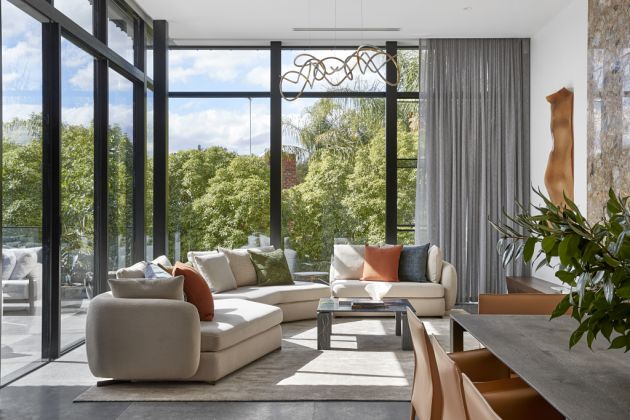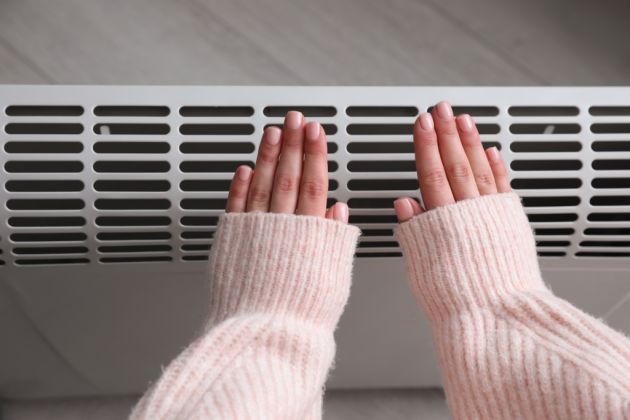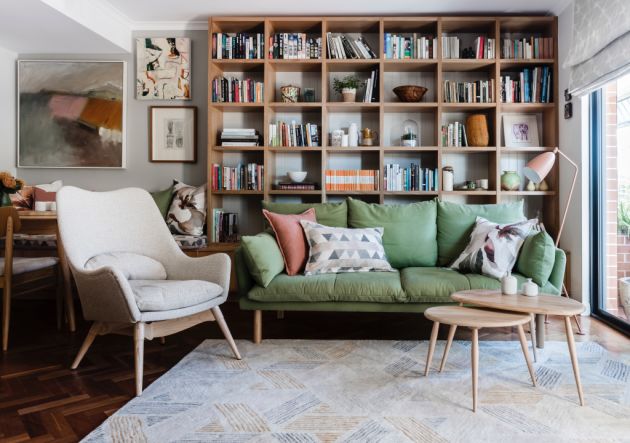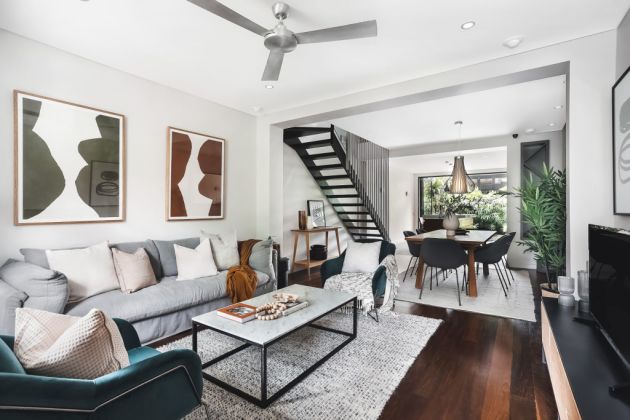
With a little research and planning, it is possible to reduce your heating bills. Photo: iStock
According to Australia’s Energy Rating website, heating and cooling accounts for a hefty 40 per cent of our national household energy use on average.
Simon Clark of Sustainable Homes Melbourne explains it this way: “Since the post-war boom, Australia’s focus was on building as many homes as possible, not necessarily building them well, or with energy efficiency in mind.”
Even his clients who have relocated from bitterly cold climates overseas complain about how unpleasantly freezer-like Australian homes are in the winter. “I’m talking about families who’ve come from minus 20-degree Norway-type weather,” Clark says, “And the crazy thing is, they’re colder in their home in Melbourne than they were in Norway!”
According to Clark, over-reliance on electricity and gas-guzzling heating appliances is one of the unfortunate outcomes of these short-sighted design practices.
“There’s a saying that goes – ‘If you think good design is expensive, you should look at the cost of bad design’ – and I couldn’t agree more. It certainly applies in the context of home heating,” he adds.
Fortunately, with a little research and planning, it is possible to reduce your heating bills. We offer some tips to help get you started.
“Build in” the energy savings

Considering a new build? Energy savings start by designing a home with its specific environment in mind.
“Applying passive solar design principles to your building site can take a great load off mechanical heating and cooling, save you money and reduce carbon in our atmosphere,” explains Clark.
This involves harnessing the power of the sun in winter months, blocking it out in summer and taking into consideration nearby buildings, sun and wind direction, site gradient and many other factors.
When you’ve laid the foundations with good building design, heating becomes easier. While there’s no cookie-cutter approach, Clark recommends moving away from gas.
“As the technology becomes more affordable, electric-powered hydronic heating (which uses hot water pumped from a heat pump to panels or in-slab pipes throughout the house) will be one of the greenest and most cost-effective ways to heat,” he says.
Find the right heater

Finding an affordable heating system basically comes down to a combination of upfront costs, efficiency and running costs. Photo: Liudmila Chernetska
While rustic fireplaces, cosy wood-fired stoves or nifty underfloor heating are all tempting, Australians most commonly stay warm with gas, electric or reverse-cycle heaters.
According to Atesh Mani, national product manager at Mitsubishi Electric Australia, finding an affordable heating system basically comes down to a combination of upfront costs, efficiency and running costs.
“Reverse-cycle systems can cost from $1500 upwards, depending on how many rooms need to be airconditioned. There’s the cost of the unit, installation and any upgrades to the power circuit so the system can operate safely,” Mani explains.
Clearly advertised efficiency ratings and appliance innovations are making it easier to save. “Technology has come a long way in the past decade or so. Highly efficient systems consume less electricity, which directly translates to run-cost savings over the lifetime of the unit,” he adds.
Another decision is whether to heat on a room-by-room basis or to install central heating. “If you are going to get a ducted system installed, don’t skimp on the quality of the ductwork,” says Mani. “Ducting with an increased thermal rating reduces temperature loss, reducing the load on the airconditioner and running costs over the long term.”
Optimise your energy plan

Brett Mifsud advises consumers to compare energy plans at least yearly or six monthly. Photo: iStock.
As Brett Mifsud, general manager of Energy at Compare the Market, says “If it’s been more than a year since you last switched electricity or gas plans, there’s a good chance you could be paying more than you need to, which could make all the difference in the winter months.”
“Compare energy plans at least yearly or six-monthly, as there are always new deals coming onto the market, which could mean more money in your pocket. Using an online comparison tool is an easy way to see a range of plans and how they stack up against each other,” he says
Mifsud emphasises the importance of comparing the whole plan and not just focusing on one feature. “Retailers often try to attract customers with flashy perks, but these are typically for a set period and you may end up paying more when they expire,” he says.
Asking about fixed rates, avoiding paper bills and credit card payments and checking the cost savings on bundled electricity and gas plans are all additional things that could help you avoid bill shock, according to Mifsud.
Also, “It’s best to resist the urge to blast the heater, as each degree warmer can increase your energy usage by up to 10 per cent,” he says.
Use clever heating hacks

You can winter-proof your home without even turning on the heater. Interiors by Studio Trio featuring a rug from Hali Rugs Photo: Maree Homer
Laura Pittaway, interior designer at The Build by Temple & Webster points out that with a few clever hacks, you can winter-proof your home without even turning on the heater (and improve the look and feel of your living space in the bargain).
Renters who are restricted with what they can do under their lease, and who face challenges asking landlords for repairs and upgrades, will find these tips especially helpful.
“Windows and doors play a huge role in keeping in the heat,” says Pittaway. “Ensuring they’re properly sealed will keep out draughts and keep in warmth.”
“If you are installing brand new doors and windows, make sure you discuss ways to optimise insulation with your supplier,” she says. “For existing windows and doors, most hardware stores also sell DIY sealing products that are easy to install. And as a quick fix, you can use things like draught-stoppers or door snakes.”

Switch your ceiling fans to reverse to push rising warm air down. Photo: domain.com.au
“The (other) most affordable way to insulate your home is with window coverings, especially on south-facing windows,” Pittaway adds. “The right curtain or blind ensures that you limit the amount of heat lost through the glass during the cooler months.”
The final step is layering. “Not only is it aesthetically pleasing, but layering your home with rugs and textiles is also very practical. Adding extra floor coverings and throws to your bedrooms and living spaces will add instant warmth and keep your fingers and toes from getting cold,” Pittaway says.
Oh, and here’s another sneaky tip. “Ceiling fans are associated with cooling but they can also be surprisingly valuable for warming your home during winter,” says Pittaway. Switching to the winter setting reverses the blades so they move in a clockwise direction and gently draw air up towards the ceiling.
article by domain.com.au
